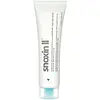What's inside
What's inside
 Key Ingredients
Key Ingredients

 Benefits
Benefits

 Concerns
Concerns

 Ingredients Side-by-side
Ingredients Side-by-side

Water
Skin ConditioningGlycerin
HumectantCyclopentasiloxane
EmollientSodium Acrylate/Sodium Acryloyldimethyl Taurate Copolymer
Emulsion StabilisingDimethicone
EmollientCyclohexasiloxane
EmollientIsohexadecane
EmollientPhenoxyethanol
PreservativeCaprylyl Glycol
EmollientPolysorbate 80
EmulsifyingLecithin
EmollientPolysilicone-11
Hydroxypropyl Cyclodextrin
MaskingPalmitoyl Tripeptide-38
Skin ConditioningHexanoyl Dipeptide-3 Norleucine Acetate
Skin ConditioningS-Mu-Conotoxin Cniiic Acetate
Skin ConditioningWater, Glycerin, Cyclopentasiloxane, Sodium Acrylate/Sodium Acryloyldimethyl Taurate Copolymer, Dimethicone, Cyclohexasiloxane, Isohexadecane, Phenoxyethanol, Caprylyl Glycol, Polysorbate 80, Lecithin, Polysilicone-11, Hydroxypropyl Cyclodextrin, Palmitoyl Tripeptide-38, Hexanoyl Dipeptide-3 Norleucine Acetate, S-Mu-Conotoxin Cniiic Acetate
Water
Skin ConditioningNiacinamide
SmoothingGlycerin
HumectantDipropylene Glycol
HumectantPropanediol
SolventDimethicone
EmollientCyclodextrin
AbsorbentMethylpropanediol
SolventSodium Palmitoyl Proline
Skin ConditioningPentylene Glycol
Skin ConditioningCaprylyl Glycol
EmollientPhenoxyethanol
PreservativeSodium Polyacrylate
AbsorbentButyrospermum Parkii Butter
Skin ConditioningPolysilicone-11
Ammonium Acryloyldimethyltaurate/Vp Copolymer
Butylene Glycol
HumectantCannabigerol
Skin ConditioningCannabidiol - Synthetically Produced
AntioxidantSodium Phytate
Camellia Sinensis Leaf Extract
AntimicrobialPalmitoyl Hexapeptide-52
Skin ConditioningPassiflora Incarnata Extract
AstringentDecyl Glucoside
CleansingSea Water Extract
Skin ConditioningN-Prolyl Palmitoyl Tripeptide-56 Acetate
Skin ConditioningWater, Niacinamide, Glycerin, Dipropylene Glycol, Propanediol, Dimethicone, Cyclodextrin, Methylpropanediol, Sodium Palmitoyl Proline, Pentylene Glycol, Caprylyl Glycol, Phenoxyethanol, Sodium Polyacrylate, Butyrospermum Parkii Butter, Polysilicone-11, Ammonium Acryloyldimethyltaurate/Vp Copolymer, Butylene Glycol, Cannabigerol, Cannabidiol - Synthetically Produced, Sodium Phytate, Camellia Sinensis Leaf Extract, Palmitoyl Hexapeptide-52, Passiflora Incarnata Extract, Decyl Glucoside, Sea Water Extract, N-Prolyl Palmitoyl Tripeptide-56 Acetate
 Reviews
Reviews

Ingredients Explained
These ingredients are found in both products.
Ingredients higher up in an ingredient list are typically present in a larger amount.
Caprylyl Glycol is a humectant and emollient, meaning it attracts and preserves moisture.
It is a common ingredient in many products, especially those designed to hydrate skin. The primary benefits are retaining moisture, skin softening, and promoting a healthy skin barrier.
Though Caprylyl Glycol is an alcohol derived from fatty acids, it is not the kind that can dry out skin.
This ingredient is also used as a preservative to extend the life of products. It has slight antimicrobial properties.
Learn more about Caprylyl GlycolDimethicone is a type of synthetic silicone created from natural materials such as quartz.
What it does:
Dimethicone comes in different viscosities:
Depending on the viscosity, dimethicone has different properties.
Ingredients lists don't always show which type is used, so we recommend reaching out to the brand if you have questions about the viscosity.
This ingredient is unlikely to cause irritation because it does not get absorbed into skin. However, people with silicone allergies should be careful about using this ingredient.
Note: Dimethicone may contribute to pilling. This is because it is not oil or water soluble, so pilling may occur when layered with products. When mixed with heavy oils in a formula, the outcome is also quite greasy.
Learn more about DimethiconeGlycerin is already naturally found in your skin. It helps moisturize and protect your skin.
A study from 2016 found glycerin to be more effective as a humectant than AHAs and hyaluronic acid.
As a humectant, it helps the skin stay hydrated by pulling moisture to your skin. The low molecular weight of glycerin allows it to pull moisture into the deeper layers of your skin.
Hydrated skin improves your skin barrier; Your skin barrier helps protect against irritants and bacteria.
Glycerin has also been found to have antimicrobial and antiviral properties. Due to these properties, glycerin is often used in wound and burn treatments.
In cosmetics, glycerin is usually derived from plants such as soybean or palm. However, it can also be sourced from animals, such as tallow or animal fat.
This ingredient is organic, colorless, odorless, and non-toxic.
Glycerin is the name for this ingredient in American English. British English uses Glycerol/Glycerine.
Learn more about GlycerinPhenoxyethanol is a preservative that has germicide, antimicrobial, and aromatic properties. Studies show that phenoxyethanol can prevent microbial growth. By itself, it has a scent that is similar to that of a rose.
It's often used in formulations along with Caprylyl Glycol to preserve the shelf life of products.
Polysilicone-11 is a film-forming silicone that creates a non-tacky and matte finish on the skin. It's commonly used to improve texture, absorb excess oil, and help active ingredients spread evenly.
Due to its "rubber-like" structure, it stays on the skin's surface instead of being absorbed. On the skin, it creates a flexible layer that enhances wearability and stability.
Water. It's the most common cosmetic ingredient of all. You'll usually see it at the top of ingredient lists, meaning that it makes up the largest part of the product.
So why is it so popular? Water most often acts as a solvent - this means that it helps dissolve other ingredients into the formulation.
You'll also recognize water as that liquid we all need to stay alive. If you see this, drink a glass of water. Stay hydrated!
Learn more about Water